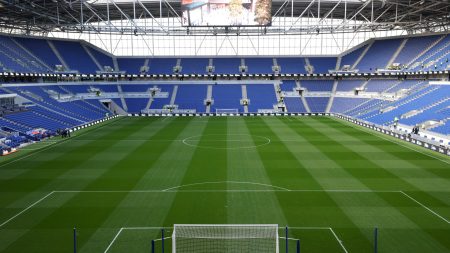The realm of football punditry, often associated with tactical analysis and heated debates, has recently been subjected to an unconventional evaluation – a beauty contest judged by artificial intelligence. The AI-powered beauty tool, Golden Ratio Face app, analyzed the facial features of 38 prominent football pundits, assessing their symmetry, structure, health, smile, eyes, and even factoring in social media feedback. The unexpected winner, emerging as the “sexiest male football pundit,” was none other than Peter Crouch, the 6ft 7in former England striker, renowned for his robotic goal celebration. Crouch scored an impressive 17.39 out of 20, a testament to his AI-defined attractiveness, leaving many surprised and amused. This unconventional assessment highlights the increasing integration of AI into various aspects of our lives, even extending to subjective areas like beauty and attractiveness.
Crouch’s victory, while surprising to some, reflects the evolving definition of attractiveness. Traditionally, male attractiveness in media has often been associated with more conventional features. However, Crouch’s unique charm, combined with his towering height and humorous personality, seems to have resonated with the AI’s algorithm. The AI’s evaluation, based on a combination of facial measurements and social media sentiment, suggests a shift away from traditional beauty standards towards a more holistic assessment that considers personality and public perception. This raises interesting questions about the future of beauty standards and the influence of AI in shaping those perceptions.
Following closely behind Crouch in the AI-generated ranking was former Scotland striker Ally McCoist, with a score of 16.12. Michael Dawson, the ex-Tottenham Hotspur player, secured the third position with 14.63 points. BBC Match of the Day 2 presenter Mark Chapman secured the fourth spot with 14.42, followed by Shay Given at 14.41. This diverse range of pundits, each with their own distinctive styles and personalities, further emphasizes the AI’s apparent departure from conventional beauty norms. The algorithm’s selection criteria, encompassing facial features alongside social media feedback, suggests a more complex and nuanced approach to evaluating attractiveness.
The remaining top ten positions were filled by a mix of former footballers and established presenters. Dion Dublin secured the sixth spot with 13.94, followed by Don Hutchison with 13.45, Glenn Hoddle with 13.1, Joleon Lescott with 13.06 and Ashley Williams rounding out the top ten with 13.04. The inclusion of these individuals further reinforces the AI’s focus on a broader spectrum of attractive qualities, beyond just physical attributes. The algorithm’s consideration of social media presence adds another layer to the evaluation, potentially reflecting the influence of public opinion and online persona in shaping perceptions of attractiveness.
The lower end of the rankings saw some familiar faces, including former Manchester United captain Roy Keane, who finished last with a score of 9.59. Other notable figures included Gary Neville at 11.67, Gary Lineker at 11.21, and Rio Ferdinand at 11.11. These rankings, while potentially surprising to some, highlight the subjective nature of beauty and the diverse criteria employed by the AI in its assessment. The inclusion of social media feedback in the algorithm could have played a role in these outcomes, reflecting the dynamic relationship between public perception and perceived attractiveness.
The use of AI to judge beauty in this context raises several intriguing questions. Is beauty truly quantifiable by an algorithm? How much weight should be given to facial symmetry and structure versus other factors like charisma and personality? And what does this mean for the future of beauty standards? While the results of this particular study are primarily for entertainment purposes, they spark a broader conversation about the evolving definition of attractiveness in the age of AI and its potential impact on our societal perceptions of beauty. The integration of AI in such subjective domains challenges traditional notions and opens up new avenues for understanding and interpreting beauty.











